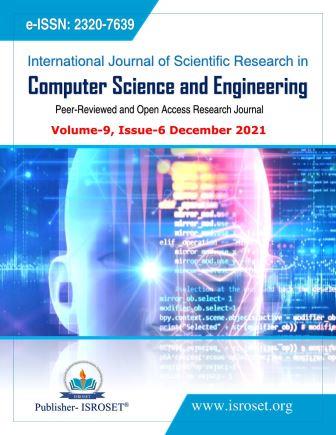Evolutionary Training of Binary Neural Networks by Genetic Algorithm
Keywords:
Evolutionary algorithm, Genetic algorithm, Neural network, Network quantization, NeuroevolutionAbstract
A problem with deep neural networks is that the memory size for recording a trained model becomes large. A solution to this problem is to make the parameter values binary. A challenge for the binary neural networks is that they cannot be trained by the ordinary gradient-based optimization methods. The author previously applied Evolution Strategy (ES) to the training of binary neural networks and evaluates its ability. This paper applies Genetic Algorithm (GA), another instance of evolutionary algorithms, and compares GA with ES. The experimental results with a classification task revealed that GA could also optimize parameter values well so that the trained model accurately classified both trained and untrained data. No significant difference was observed between classification accuracies by GA and ES.
References
G. E Hinton, R. R. Salakhutdinov, “Reducing the Dimensionality of Data with Neural Networks,” Science, Vol.313, Issue.5786, pp.504-507, 2006.
G. E. Hinton, S. Osindero, Y. W. Teh, “A Fast Learning Algorithm for Deep Belief Nets,” Neural Computation, Vol.18, No.7, pp.1527-1554, 2006.
Y. L. Boureau, Y. L. Cun, “Sparse Feature Learning for Deep Belief Networks,” Advances in Neural Information Processing Systems, pp.1185-1192, 2008.
I. Sutskever, G. E. Hinton, “Deep, Narrow Sigmoid Belief Networks are Universal Approximators,” Neural Computation, Vol.20, No.11, pp.2629-2636, 2008.
Y. Bengio, “Learning Deep Architectures for AI,” Foundations and Trends in Machine Learning, Vol.2, No.1, pp.1-127, 2009.
H. Larochelle, Y. Bengio, J. Louradour, P. Lamblin, “Exploring Strategies for Training Deep Neural Networks,” Journal of Machine Learning Research, Vol.10(Jan), pp.1-40, 2009.
X. Glorot, Y. Bengio, “Understanding the Difficulty of Training Deep Feedforward Neural Networks,” Proceedings of the Thirteenth International Conference on Artificial Intelligence and Statistics, Vol.9, pp.249-256, 2010.
P. Vincent, H. Larochelle, I. Lajoie, Y. Bengio, P. A. Manzagol, “Stacked Denoising Autoencoders: Learning Useful Representations in a Deep Network with a Local Denoising Criterion,” Journal of Machine Learning Research, Vol.11(Dec), pp.3371-3408, 2010.
R. Salakhutdinov, G. Hinton, “An Efficient Learning Procedure for Deep Boltzmann Machines,” Neural Computation, Vol.24, No.8, pp.1967-2006, 2012.
A. Krizhevsky, I. Sutskever, G. Hinton, “ImageNet Classification with Deep Convolutional Neural Networks,” Advances in Neural Information Processing Systems, Vol.25, pp.1097-1105, 2012.
A. Graves, A. Mohamed, G. Hinton, “Speech Recognition with Deep Recurrent Neural Networks”. IEEE International Conference on Acoustics, Speech and Signal Processing, pp.6645-6649, 2013.
Y. Bengio, A. Courville, P. Vincent, “Representation Learning: a Review and New Perspectives,” IEEE Transactions on Pattern Analysis and Machine Intelligence, Vol.35, No.8, pp.1798-1828, 2013.
Y. LeCun, Y. Bengio, G. Hinton, “Deep Learning,” Nature, Vol.521, No.7553, pp.436-444, 2015.
J. Schmidhuber, “Deep Learning in Neural Networks: an Overview,” Neural Networks, Vol.61, pp.85-117, 2015.
S. Zhang, A. E. Choromanska, Y. LeCun, “Deep Learning with Elastic Averaging SGD,” Advances in Neural Information Processing Systems, pp.685-693, 2015.
I. Goodfellow, Y. Bengio, A. Courville, “Deep Learning,” MIT Press, 2016.
M. Courbariaux, Y. Bengio, JP. David, “BinaryConnect: Training Deep Neural Networks with Binary Weights during Propagations,” Proceedings of the 28th International Conference on Neural Information Processing Systems (NIPS’15), pp.3123–3131, 2015.
X. Lin, C. Zhao, W. Pan, “Towards Accurate Binary Convolutional Neural Network,” Proceedings of the 31st International Conference on Neural Information Processing Systems (NIPS’17), pp.344–352, 2017.
H. Qin, R. Gong, X. Liu, X. Bai, J. Song, N. Sebe, “Binary Neural Networks: A Survey,” Pattern Recognition, Vol.105, 107281, 2020.
H. Okada, “Evolutionary Training of Binary Neural Networks by Evolution Strategy, ” International Journal of Scientific Research in Computer Science and Engineering, Vol.9, Issue 1, pp.31–35, 2021.
H.P. Schwefel, “Evolution Strategies: a Family of Non-Linear Optimization Techniques based on Imitating Some Principles of Organic Evolution,” Annals of Operations Research, Vol.1, pp.165–167, 1984.
H.P. Schwefel, “Evolution and Optimum Seeking,” Wiley & Sons, 1995.
H.G. Beyer, H.P. Schwefel, “Evolution Strategies: a Comprehensive Introduction,” Journal Natural Computing, Vol.1, No.1, pp.3–52, 2002.
D. E. Goldberg, J. H. Holland, “Genetic Algorithms and Machine Learning,” Machine Learning, Vol.3, No.2, pp.95–99, 1988.
Downloads
Published
How to Cite
Issue
Section
License

This work is licensed under a Creative Commons Attribution 4.0 International License.
Authors contributing to this journal agree to publish their articles under the Creative Commons Attribution 4.0 International License, allowing third parties to share their work (copy, distribute, transmit) and to adapt it, under the condition that the authors are given credit and that in the event of reuse or distribution, the terms of this license are made clear.







